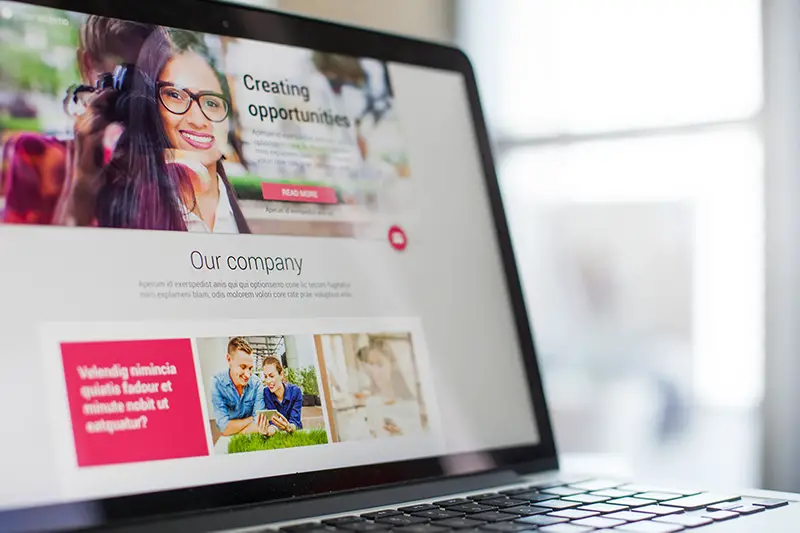Click here to get this post in PDF
Quick question – on average, how many websites do you visit per day? Also, how many of them really appeal to you, compel you to scroll through the website and check out different pages? We’re sure there’s a disparity in number when you answer both the questions.
It takes only a matter of a few seconds to create the first impression about a website but it largely impacts the retention or bounce rate. A clean and captivating website will encourage the users to visit it several times while a poorly designed website with slow loading speed or complicated navigation will ensure that the visitors will never return.
Now, what are the factors that distinguish a good website from a poor one? Shortlisting these factors is the first step to take if you are planning to craft a website. Don’t worry. We have made it easier for you. Today, we will take a look at 7 crucial factors that can make or break your business website design.
1. Purpose
Every business has a unique purpose and the website should reflect it. In fact, this purpose will dictate the design of your website.
For instance, are you developing a high-end eCommerce website? Or is it an informative website for small business? Your answer will determine what content should be included on the site, how to display the content, which technologies will be used, how the site will be managed, and everything in between.
If your website is purpose and directionless, the visitors will be confused and bounce. The purpose of a website works in the same manner as a mission statement does for a business. It sets the tone for the activities and also provides a context that should help in decision making.
2. Accessibility
Website accessibility is a crucial part of a website. It doesn’t compel the visitors to use a specific browse, exclude visually impaired users, etc. No matter how stunning a website is, it will still miss out on leads if it’s not accessible by everyone.
3. Usability
Though usability and accessibility are often merged together, they are conceptually different. The usability of a site often depends on the nature of the website. For example, a large blog website or an eCommerce website should have an easy search function. Again, the eCommerce website, unlike the blog site, should possess product filters and a shopping cart.
If your site lacks usability, you will have a tough time retaining visitors on the site and encouraging repeat visits.
4. Clarity
Earlier, we discussed the importance of building a purpose-driven website. Now, it’s time to make the purpose clear to your visitors. With an overload of features and content, you may confuse the visitors. For instance, the website for enterprises will be very different from a website for a church.
One of the ways to achieve clarity is to state what you have to offer and why your visitors should care. This strategy applies to every type of website. An eCommerce website should clearly display all the products, service providers should outline their services in detail, blogs need to feature different types of content that the users will receive on subscribing to the newsletter, and so on.
Addressing the pain point of the visitors and offering them a solution with a compelling CTA is the basic way to drive conversions.
5. Navigation
Website navigation has the potential to affect both accessibility and usability. While developing a new website or revamping an old one, navigation should be your primary concern. Easy and intuitive navigation across all the web pages will enhance the user experience.
We must also mention that site loading speed go hand-in-hand with website navigation. There’s no point in integrating an intuitive navigation button if your visitors cannot land on the desired page within seconds. Blogs, eCommerce websites, or any large websites with lots of web pages should pay attention to this.
Also, if you are using anchor text as a tool for navigation, make sure to use long and explanatory phrases for the anchor text so that people can understand what to expect from the linked site.
6. User-Centric
Most often, website owners get distracted by their own needs and go on to reflect the same on their website. This is the wrong approach when it comes to designing a website. Remember, your business is more about your potential consumers than about you. Therefore, put yourself in your audience’s shoes and conduct thorough scrutiny on the site.
A minimalist web design often wins a competitive edge by following this principle. Display just what your audience wants on the website and witness a rise in your business. Unnecessarily complicating the design with clustered content & technical jargon and stuffing all the web design features will only overwhelm the visitors.
7. Appearance
You must have wondered why we skipped it so far. Well, it’s the cherry on the cake. It’s a determining factor for the success of a website. Every website should embrace its uniqueness all the while possessing the essence of its industry. Too many out-of-the-box elements in navigation or CTA will confuse your visitors. Again, a template website with a cookie-cutter design will repel them. So make sure to follow the latest trends in website designing while crafting your website.
Wrapping Up
Outlining these factors is an easy task but designing a website following these is not so easy. For that, you need to employ an experienced website design company who can equip your website with the right features. While hiring the experts, always remember a quote by Benjamin Franklin: “The bitterness of poor quality remains long after the sweetness of low price is forgotten”. So, invest a few more bucks to rest assured of the quality.
You may also like: How to Create Website Content That Your Customers Love
Image Source: Shutterstock.com

